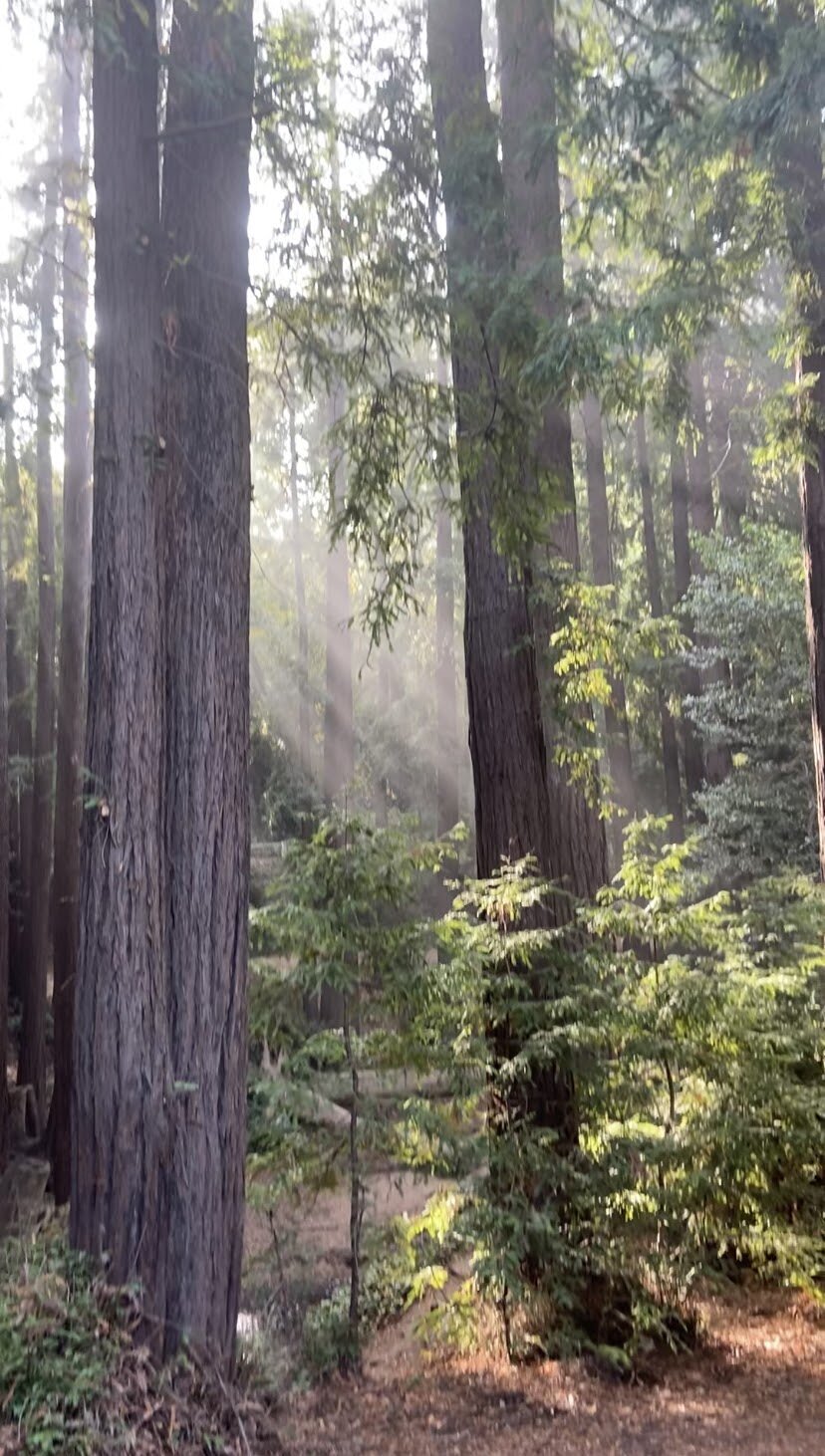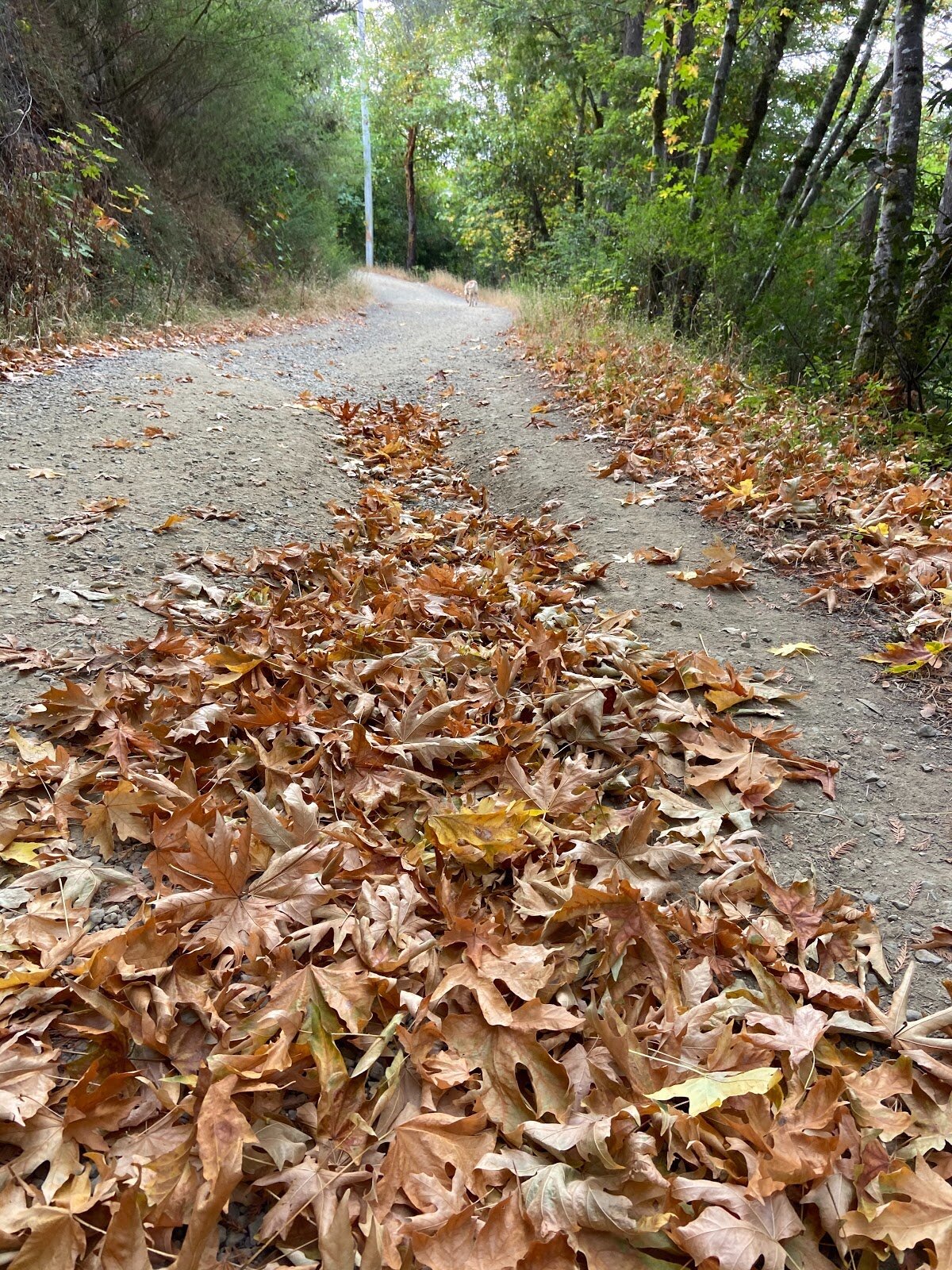Meditations on Fire and Fall
We’ve had clear air in the Bay Area for about two weeks now, the longest stretch since the beginning of August. Opening windows hasn’t yet become habit.
Californians have a routine: every fall we pack our go-bags, sign up for local safety alerts, and then head back to real life. We find solace in information, like we’re grasping for control, staying updated on fire radius and wind shifts, donating to CalFire.
And yet, our knowledge makes no difference; smoke sits in the air outside while our lives go on just the same. Entire ecosystems still burn. Only some Californians have the privilege to live in a “normal” world, with a lingering question: for how much longer?
One morning during the August fires, my dog and I were one of the first up Mount Tamalpais, my favorite place to hike by my house. A thick fog hung in the air, wrapping around the mountain. The light that did filter through the clouds was tinged by smoke - too red for sunrise. As I walked along the trail, I listened to Jordan Kisner’s podcast, Thresholds, where she interviews authors about beginnings and shifts, openings in their life paths.
I felt the acute presence of a physical threshold on that smoky mountain. The beginning of an awareness, a shift, an edge when the environment and the world say in unison, something is terribly wrong. The mountain whispered, too early. Wildfire season usually peaks in October. August is too soon.
In first grade, my family moved to Marin County, north of the Golden Gate bridge. When we were settling in and I had no friends, I’d climb into bed with my parents each morning. My dad and I would watch the redwoods outside, laugh at the crows that settled at the tip-tops of the huge trees, sometimes two or three at a time, cawing. We could hear them through the windows. My dad would tell me the crows were stopping for their morning coffee.
The redwoods followed me through childhood. I built forts with their fallen branches, climbed their stumps, pulled their prickly offshoots from my dog’s fur, breathed their rich, burnt-red scented air, and relaxed in their shade.
According to Governor Gavin Newsom, 10,849 lightning strikes hit California in just 72 hours this August. I remember waking up, startled, confused by the thunder and lightning that brought no rain. One of the resulting wildfires, the CZU Lightning Complex, threatened the redwoods of Big Basin Redwoods State Park.
Northern California is known for its coastal redwoods, in particular those found at Big Basin – home to towering old-growth redwoods that have lived for thousands of years. When I heard news that the park was directly in the path of an uncontained wildfire, the sadness of losing the trees reminded me of the losses we seem to accept: people, animals, and ecosystems.
As I drove home from the trailhead, I stopped to say hello to a neighbor. She has lived in Marin for fifty years. She shared with me what she’s learned from this extreme wildfire season: we must all be redwood trees.
There is no known insect that can destroy a redwood. Their groves survive winds and floods because their roots intertwine to support one another. And redwood trees are made to burn. They have a special chemical in their bark that keeps them alive while on fire.
The CZU Complex burned right through Big Basin Redwoods State Park. Structures burned, trees caught fire, and soon new stems will grow from their charred trunks. I am struck by the resiliency of redwoods, by the stability they provide for those around them, and by their ability to persevere.
There is a lesson to be learned from redwoods. The trees refuse to live in a climate of fear. How can we take steps to do the same?
Amelia Browne is a sophomore student at Yale University studying English and Creative Writing.

